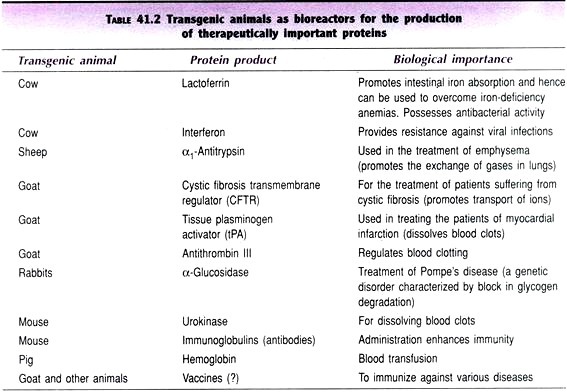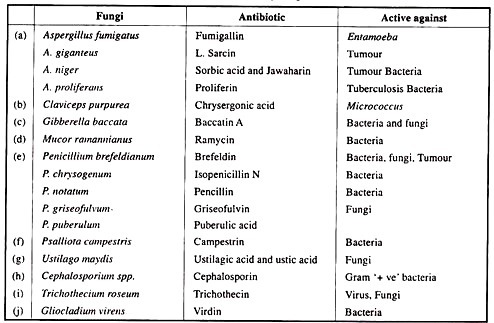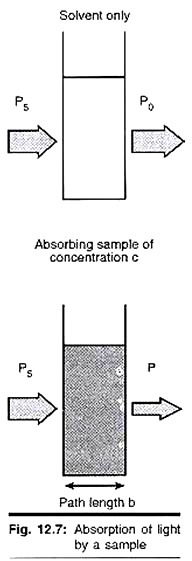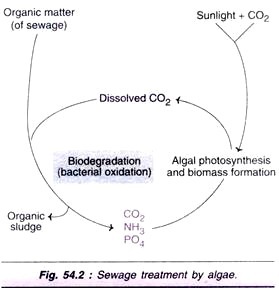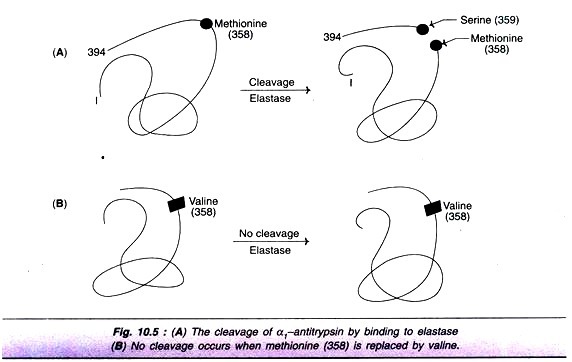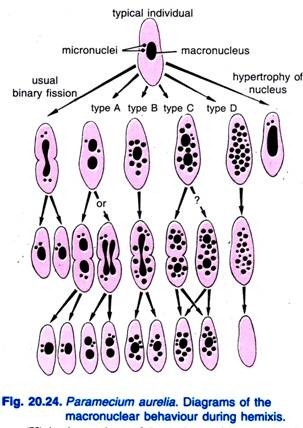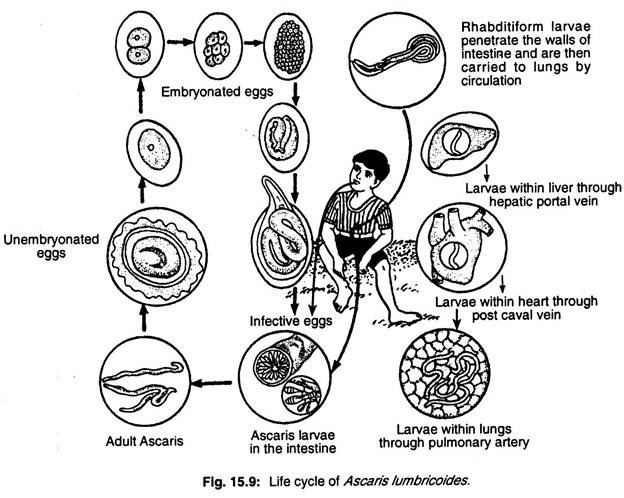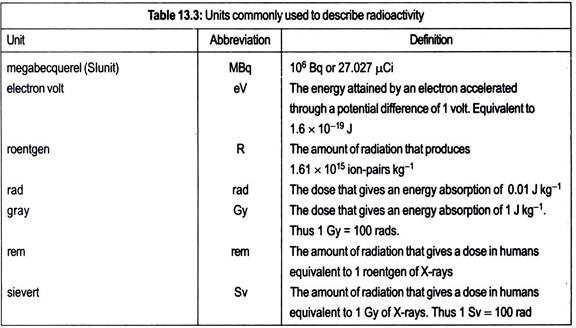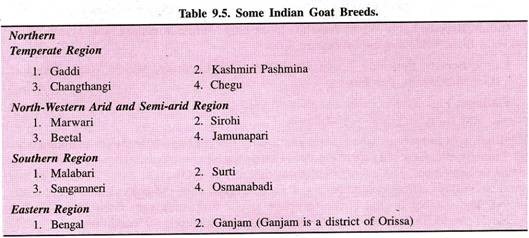This article throws light upon the significant contributions of eminent scientists of the world towards plant tissue culture.
The history of plant tissue culture begins with the concept of cell theory given independently by Schleiden 1838 and Schwann 1839 that established the cell as a functional unit.
This implies that cells are autonomous. The concept was tested experimentally by Haberlandt after 130 years, who conceived the idea of culturing plant cells.
The developments in culturing of plant cells, tissues and organs are associated with the developments in our knowledge about nutritional requirements of plant cell, discovery of growth regulating factors, analytical tools and techniques, and development of microscopy. Though, earlier attempts to grow plant cells met with failures, success was achieved in growing animal cell culture at that time. Earlier works involving plant tissue were mainly concerned with nutritional requirement of cells to make them divide and sustain growth. The work progressed rapidly after the discovery of auxin and cell division factor.
Early studies also frequently used complex nutritional factors like coconut water, yeast extract, malt extract and casein hydrolysate. The developments after World War II were rapid as many inventions developed for the war purposes found their applications in biological sciences. It was untiring efforts of Robbins, Kotte, White, Gautheret, Heller, Van Over-beek, Steward, Caplin, Miller, Nitsch, Reinert, Street, Morel, Skoog, Hildebrandt, Melcher, Cocking, La Rue and others that plant tissue culture, which was initiated as a tool has become a powerful technology in last three decades.
With the better understanding of the technique of plant tissue culture and nutritional requirements, of plant cell, it was possible to develop newer technologies by culturing plant organs (anther, ovary, ovule, petal, leaf and meristem) leading to establishment of new research lines viz., haploids, virus-free plants, in vitro fertilization, embryo rescue and direct regeneration from leaf disc for genetic engineering. Subsequently, it has become possible to grow isolated epidermal cells, gland cells or even protoplasts and to regenerate from such specialized cells or individual protoplasts.
Regeneration of plants and production of useful metabolites through plant biotechnology has become an industrial application. Demonstration of variability in cell cultures in relation to secondary metabolites has given the concept of morphological variations and hence ‘Somaclonal variation’.
The significant contributions of selected scientists are given in the following paragraphs:
1. Gottlieb Haberlandt:
With the establishment of cell theory proposed by Schleiden & Schwann (1839), cell is considered as structural and functional unit of living organisms. In plants, totipotency of excised plant tissues and cells was established subsequently. It was Gottlieb Haberlandt, an Austrian scientist, who conceived the idea of culturing isolated plant cells in the nutrient solutions.
Based on cell theory, he assumed that there was no limitation of divisibility; therefore, he started with isolated mesophyll cells using Knop’s nutrient solution, sucrose, aspargine and peptone working at Graz, Austria. Haberlandt’s vision of the totipotency of plant cells represents the actual beginning of tissue culture. Haberlandt (1902) in his famous paper described the cultivation of mesophyll cells of Lamium purpureum and Eichhornia crassipes, epidermal cells of Ornithogalum and hair cells of Pulmonaria. The cells survived 3-4 weeks but without cell division, there was increase in cell size.
He conducted several experiments and carefully recorded his observations and interpreted the results. Using pieces of mature potato tubers he observed that cell division occurred in small, thin tissue almost without exception when the explant contained a vascular strand.
If Haberlandt had used in place of highly difficult tissues, some other materials like willow or carrot, which are known to proliferate without growth substances, he would have obtained the first tissue culture. The other reason for the failure was the incomplete information at that time about nutrition of plant tissues and lack of knowledge about plant growth regulators.
Haberlandt worked for several years at Graz, Viena, Austria and then in 1909, moved to Berlin as professor of botany. In Berlin he suggested hormone like substances are responsible for wound healing. At that time hormones were not known in plants. He was member of Austrian and German botanical societies and Academies. He was a multi-talented, imaginative and impressive scientist. The details of his work, biography and achievements are given in a recently published book “Plant tissue culture: 100 years since Gottlieb Haberlandt”, by Laimer and Rucker published by Springer, Wien.
2. P. Nobecourt:
P. Nobecourt a French plant pathologist, announced simultaneously in 1939 with White and Gautheret, the possibility of cultivating plant tissues for unlimited period. It was possible with the use of recently discovered indole acetic acid (IAA) by F. W. Went (1932). This success opened new avenues of cultivating plant cells for different studies. This success was announced a few months before the beginning of Second World War. And for six years, American & French scientists worked without knowledge of their mutual results.
3. Pierre Roger Gautheret:
Like many others, Pierre Roger Gautheret was working earlier at the University of Sorbonne, Paris, France. Gautheret also tried to cultivate isolated cells and root tips without getting tissue cultures. Following these failures, he turned towards the tissue participating in wound healing. He first used piece of cambium cut from trees, especially Acer pseudoplatanus, Sambucus nigra and Salix capraea.
Preliminary attempts with liquid medium failed completely. Later explants were placed on the surface of medium solidified with agar. He did not expect any good results and kept those cultures in a cupboard. He was surprised to find very healthy callus on the ex-plant after two months. He observed living turgescent dividing cells.
Over the next 5 years the recognition of the importance of B vitamins in yeast extract and the auxin (IAA) allowed significant advances to be made. It was because of these factors that Gautheret could achieve the proliferation and division of cambial tissue of Salix capraea and Populus alba for several months. In 1939, Gautheret reported the propagation of carrot as the first plant tissue culture of unlimited growth.
IAA stimulated the growth of undifferentiated tissue on cut surfaces of sterile explants. This tissue, termed callus, was similar in appearance to wound tissue and subsequently it was found that callus could be sub-cultured indefinitely. His results were immediately verified in Italy by Grelli. Finally, the possibility of cultivating plant tissues for unlimited periods was announced almost simultaneously by White (1939), Nobecourt (1939) and Gautheret (1939).
In spite of difficulties encountered during the war, Gautheret was able to receive some collaborators in his laboratory and one of them was Georges Morel. Gautheret was working on fleshy organs, especially Chicory, Jerusalum artichoke and Brassica napus and Morel established strains of lianas, herbs and trees. During the study of normal and tumour culture, the development of auxin non-requiring tissues were observed by French and American scientists. Gautheret discovered the reasons for this difference (Kulescha and Gautheret, 1948), the normal tissues maintained in vitro produces an insignificant amount of auxin while the tumour tissues produce rather important amount of this growth substance.
Later on, hyper-auxinity has been established in tumour tissues. The same was observed in case of habituated tissues not requiring exogenous supply of auxin. He proposed the term ‘habituation’ for such cultures. In 1942, Gautheret observed development of buds in tissue culture of Ulmus and of plantlets in Chicory tissue cultures, establishing the totipotency of the cells. The various investigations carried out by Gautheret during 30s and 40s were mainly concerned about nutrition and cell differentiation of cultivated cells. His other major contributions are establishment of hormones autonomous cultures (habituated cultures) from hormone requiring cultures and study of tumour cells.
He also worked on root culture of Helianthus tuberosus and demonstrated that light, temperature and other factors affect the root growth. His important contributions are cited in following two monumental works.
1. Gautheret R.J. (1955). The nutrition of plant tissue cultures. Annual Review Plant Physiol. 6:433-484.
2. Gautheret R.J. (1983) Plant tissue culture: A History. Bot. Mag. Tokyo. 96: 393-410.
4. Georges Morel:
G. Morel was among the first to culture monocotyledonous tissues. He developed the method of meristem culture for the elimination of viruses and the micro-propagation of orchids and discovered the two unique opines of crown gall tissues. These opines have become marker for analysis of transformed cultures induced by Agrobacterium tumefaciens and A. rhizogenes.
Morel, in 1950, obtained the indefinite growth of monocotyledonous tissues such as Gladiolus, Iris and lily on the medium enriched with natural extract (coconut milk, yeast extract). He also cultivated Royal Fern on this medium.
Morel and Martin (1952) developed meristem culture technique and recovered Dahlia shoots, free from viruses, by meristem tip culture. In 1955, they recovered virus free potato. This attained wide application of plant tissue culture to raise virus free plants in agriculture.
The first industrial application was the work of George Morel who successfully multiplied tropical orchids through division of protocorms, little differentiated structures developing naturally on orchid embryos. In 1960, Morel observed the emergence of such bodies after carrying out a cymbidium shoot-tip culture. He also noted that protocorms could be sectioned into quarters and sub-cultured, each section regenerating a new protocorm, within a few weeks which, in turn, could be divided.
The so-obtained protocorms subsequently evolved into young plantlets. This remarkable property found almost immediate commercial use since orchid producers had to cope with slow multiplications rate through cluster division. Around 1970, first commercial multiplication laboratory was established in USA for orchids.
In 1971, he studied Agrobacterium tumefaciens, crown gall inducing bacteria, on the dicots and isolated octopine and nopaline from the A. tumefaciens infected plants. These chemicals are produced only when Ti-plasmid of the bacteria integrates with the genome of the host plant cells. They are also known as opines. This investigation opened new avenue to use Ti plasmid as a vector for gene transfer after removing opines genes from the plasmid. Morel joined the laboratory of Professor R. Gautheret in France during the World War II. He established cultures of lianas, herbs and trees. Gautheret described him as able and enthusiastic worker.
5. Philip R. White:
P. R. White, an American scientist who worked at Rockfeller Institute, New Jersey, USA, was one of the pioneer tissue culturist of early period. In 1934 he reported for the first time successful continuous cultures of tomato root tips and obtained indefinite growth of roots. Initially he used salts of Knop’s solution, sucrose and yeast extract in his medium.
Later, yeast extract was replaced by three vitamins, viz. pyrodoxine, thiamine and nicotinic acid. This synthetic medium has been proved to be one of the basic medium for a variety of tissue cultures. White maintained some of his root cultures till before his death in 1968.
With the advice of Stanley, a famous scientist who isolated tobacco mosaic virus (TMV), White started work on the dual culture. He established cultures of tomato roots infected with TMV. Cultures of infected roots gave rise to healthy roots by root tip cultures. The success of White’s experiment opened the field of root cultures, which have been explored by many workers to solve morphological, physiological and pathological problems.
In 1939, White had presented his work in tobacco tissues at a meeting of the Botanical Society of America. He reported for the first time, long term callus cultures which were established from tumour tissues of Nicotiana glauca x N. longsdorfii. He was successful due to the incorporation of auxin in the medium.
Similar results were also observed by Gautheret and Nobecourt in the same year by conducting independent research on carrot. White has contributed in formulating root culture medium, which is known by his name as White’s medium (1943). This medium consists of essential elements, glycine, nicotinic acid, thiamine, pyridoxine, sucrose etc.
The work of White can be categorized into three aspects, continuous growth of excised tomato root tips in liquid medium, in vitro cultivation of viruses on excised roots and growth of tumour tissues. On March 25, 1968, he died after suffering from acute hepatitis. His book on tissue culture was the only book on the subject. White P. R. (1963). The cultivation of animal and plant cells. Ronald Press, New York.
6. F.C. Steward:
F.C. Steward was one of the pioneers of plant tissue culture and contributed a lot by way of understanding the requirements of plant tissue cultures and developing techniques for the different applications. Working at Cornell University, Ithaca, USA, he had developed a School of Plant Physiologists involved in plant tissue culture work. Caplin and Steward (1948) used coconut water for the first time in plant tissue culture and obtained vigorous proliferation of carrot explants.
It was also evident from this finding that the stimulating substance of coconut milk was not in auxin. Steward and co-workers were the pioneer in establishing cell cultures of single cells and clumps in liquid medium (Steward and Shantz, 1995) and developed various types of vessels for this purpose including the rotating nipple flasks Fig. 24.1
The another landmark comes in the form of somatic embryogenesis in carrot cell suspension cultures and production of complete plants (Steward and Ammirato, 1969). Steward had taken cell suspension of callus tissues derived from wild carrot embryos and plated them out on a coconut milk medium solidified with agar. From this plated cell population, thousands of embryo developed each being derived from one or a few cells of the callus tissue. This has not only opened new avenues of micro propagation of plant species at an enormous rapid rate but also completely established the totipotency of the cell (Fig. 24.2).
His volumes on ‘Plant physiology, a treatise’ were one of the most widely used reference books on plant physiology and tissue culture.
7. Jakob Reinert:
Reinert, a German Scientist, was a pioneer in the field of plant culture and contemporary with Steward, Cocking and Street. In 1959, he was culturing undifferentiated parenchyma tissue of carrot root in complex medium containing sugar, salt and coconut milk.
On this medium the callus had been sub-cultured repeatedly, without evident morphological change. He transferred the tissue to a synthetic medium containing an elaborate mixture of known substances, including amino acids, vitamins and hormones.
The tissue became more granular and showed evidence of differentiated regions. This culture, on transfer to a medium lacking high levels of auxin, produced young plants. Histological analysis showed bipolar embryo formation in the system, which produced plants on proper medium. This had proved the development of a complete plant from mature undifferentiated parenchyma and in other words ‘the totipotency’ of cells.
Besides the embryogenesis in carrot, Reinert worked several years on developing technology for wide ranging applications of plant tissue culture, which includes cryopreservation of cells, regeneration of plantlets, anther culture, process of androgenesis, development of haploids, and protoplasts culture. The book ‘Plant cell, tissue and organ culture’ by Reinert and Bajaj (1977) Springer Verlag, Berlin Heidelberg, was the first compilation of state of art literature on plant tissue culture.
8. Folke Skoog:
Professor Folke Skoog was one of the leading plant physiologists of the world. Skoog was already renowned for his pioneering work with auxin, a plant growth hormone, when he joined the University of Wisconsin, Madison, U.S.A. While at Wisconsin, he discovered a major new class of plant hormones, the cytokinins, which stimulate the division of plant cells, and regulate plant growth and development.
During the cultivation of tobacco pith cells, Skoog and co-workers observed that the incorporation of purine base- adenine in the culture medium enhances callus growth. Similarly, DNA extracts from yeast and Herring sperm whale also favoured callus initiation and callus growth of tobacco pith cells. This leads to the isolation of a compound from autoclaved Herring sperm whale DNA called kinetin (6-furfuryl amino purine).
Though kinetin enhances cell division in pith cells, it does not present in this form in plant cells. Therefore, they concluded that this product was formed during autoclaving of whale DNA. It is produced due to dehydration and migration of a deoxyribore moiety from the 9- position of adenine to the N6-position (Miller et al., 1956). His work has had a profound impact on agricultural and horticultural practices around the world.
Skoog’s discovery of cytokinins triggered an international flood of publications that continues to this day. His work showed that a number of cytokinins occur naturally, and that at least one of these compounds occurs in every organism tested, from bacteria to humans.
With colleague Nelson J. Leonard at the University of Illinois, Skoog synthesized and tested hundreds of compounds for cytokinin activity, and established the principles that govern relationships between plant structure and activity. These discoveries are generally held to be one of the major advances made in the plant sciences during the last 50 years.
Skoog was also a pioneer in investigating how to control the formation of roots, stems and leaves from undifferentiated cells in plant tissue cultures. Tissues could be made to develop as undifferentiated masses of cells, or to become roots, stems or a combination of roots and stems, resulting in complete plants. Skoog and Miller (1957) demonstrated for the first time that a ratio of auxin and cytokinin can control the root, shoot and callus formation.
Skoog’s theory that plant development is controlled by hormone levels and other factors led to the realization that whole plants can be generated from cultured cells. This laid the groundwork for the production of transgenic plants and other advances in biotechnology.
In 1962 he and graduate student Toshio Murashige published a culture medium for optimal plant tissue growth that remains in use till date. This is a high salt medium, which was modified by Linsmaier and Skoog (1965) and relatively low salt formulation was evolved.
Skoog was born in Halland, Sweden on July 15, 1908. He decided to take up residence in the United States during a visit to California in 1925, and he became a U.S. citizen 10 years later. He received a Bachelor of Science degree in chemistry from the California Institute of Technology in 1932. He earned his Ph.D. from that institution in 1936. While at the institute, he worked closely with prominent plant physiologists Kenneth Thimann and Fritz Went (known for their work and discovery of auxin).
Between 1937-1941, Skoog was on staff at Harvard University, and from 1941-1944, at Johns Hopkins University. He served as a chemist and technical representative of the U.S. Army in Europe between 1944-1946.
Skoog played an active role in a number of biological societies. He served as president of the American Society of Plant Physiologists, the Society of Developmental Biology, the American Society of General Physiologists and the International Plant Growth Substances Association.
He was a member of the American Academy of Arts and Sciences, and the National Academy of Sciences. He was awarded the National Medal of Science in 1991 during a ceremony at the White House. Renowned plant physiologist and National Medal of Science recipient Folke Karl Skoog, professor of botany at the university of Wisconsin, Madison, U.S.A. for 32 years, died Feb. 15, 2001 after a long illness. He was 92.
9. E.C. Cocking:
Professor Edward Cocking, a Fellow of Royal Society of London, works at the Centre for crop nitrogen fixation at Nottingham University, Nottingham, U.K. He has established an International network for research on nitrogen fixation in the world’s major non-legume crops (especially rice, wheat, maize, sorghum, and oilseed rape). This involves basic research on the interaction of crops with azorhizobia for the establishment of endophytic nitrogen fixation.
Professor Cocking and his associates have been instrumental in developing many techniques of plant cell and protoplasts culture. In 1960s, for the first time a method of isolation of protoplasts in large quantities was developed using enzymes obtained from Myrothecium fungus. They obtained protoplasts from root tips for Lycopersicon esculentum using cellulase produced by the fungus.
Protoplasts isolation and their use in somatic hybridization opened new avenues of improving plant species. Subsequently, the technique found wide applications because of availability of cellulase at commercial level.
At that time they started attempting fusion of legume cells containing bacteria with non-legume cells towards developing non-legume nitrogen fixing plants. They continue these efforts with the establishment of research centre for nitrogen fixation studies.
They (Bhojwani and Cocking, 1972) were also successful in isolating protoplasts from pollen grains and pollen mother cells. They used protoplasts for understanding tobacco mosaic virus infection and multiplication in plant cells.
Development of technique of protoplasts isolation has many applications in cell biology, plant physiology and genetic engineering as mentioned in the chapter on protoplast culture.
Besides many articles on protoplasts culture, his some of the recent publications are as follows:
1. Blackhall, NW; Jotham, JP; Azhakanandam, K; Power, JB; Lowe, KC; Cocking, EC; Davey, MR (1999): Callus initiation, maintenance and shoot induction in rice. In: Methods in Molecular Biology. Vol. 111. (Ed: Hall,RD) Humana Press Inc, Totowa NJ, 19-29.
2. Azahakanandam, K; McCabe, MS; Lowe, KC; Cocking, EC; Power, JB; Davey, MR (1999): Gene transfer into and molecular characterisation of T0, T1 and T2 transgenic rice plants mediated by Agrobacterium tumefaciens. Journal of Experimental Botany 50, 20.
3. Kennedy IR and Cocking EC (1997) Biological Nitrogen Fixation: The Global Challenge and Future Needs. Position Paper of the Meeting at the Rockefeller Foundation Bellagio Conference Center, 8-12 April, 1997.
10. Indra K. Vasil and Vimla Vasil:
Prof. Indra K. Vasil and Dr. Vimla Vasil are the product of Delhi School of Morphology headed by the then Professor P. Maheshwari. They joined the laboratory of Professor A. C. Hildebrandt at Madison, Wisconsin, as post-doctoral fellow. Vasil, V. and Hildebrandt were the first to prove the early cell theory of Schwann by regenerating a tobacco plant from a single cell derived from a suspension of cultured cells.
The landmark work of Vimla Vasil on culture of single isolated cells of tobacco has opened new applications of cell cultures in genetics, morphogenesis and vegetative propagation and proved the totipotency of cell.
Single cells of hybrid tobacco callus were grown in micro-chambers in the absence of any other cells, in fresh liquid medium containing coconut milk. These produced a colony of 50-75 cells in 10-25 days. Upon transfer from the micro-chambers to agar medium, cell clumps produced callus in 3 months, which ultimately produced complete plantlets (Vasil V. and Hildebrandt, 1965).
During his stay at Wisconsin, I.K. Vasil studied cell differentiation and morphogenetic behaviour in Petroselinum hortense and Cichorium endivia. He was successful in producing C. endivia plantlets from freely suspended cells grown in vitro.
Presently I.K. Vasil and V. Vasil are Professor in the University of Florida at Gainsville, USA. I.K. Vasil has contributed significantly on the cell culture, protoplasts cultures and somatic embryogenesis of cereals (monocotyledons), particularly Pennisetum americanum, Panicum maximum, Triticum aestivum, and Zea mays. He has edited a series of books on plant tissue culture and somatic cell genetics of higher plants published by Academic Press.
Monocotyledons, particularly the cereals were considered unsuitable material to regenerate via somatic embryogenesis. I.K Vasil and co-workers demonstrated that the young leaves, inflorescences or embryos are useful in initiating embryogenic cultures.
The comprehensive work showed that selection and maintenance of embryogenic cultures at an early stage is important for maintaining long term embryogenic potential.
Establishment of embryogenic and non-embryogenic lines in monocotyledons and concept about these cultures were given by I.K. Vasil. Embryogenic cultures are compact, dry, amorphous and white in colour as compared to non-embryogenic cultures which are watery, dirty white to light brown in colour and soft in nature. It is necessary to isolate and maintain separately embryogenic cultures.
11. Riker and Hildebrandt:
Professor Albert C. Hildebrandt was a professor at the University of Wisconsin, Madison, U.S.A. As a graduate student and through ensuing years as a staff member, Hildebrandt worked closely with Professor A.J. Riker, who had a keen interest in the effect of the crown gall bacterium, Agrobacterium tumefaciens, on the host plants and its possible relation to cancer in animals.
Professor Riker was a plant pathologist and used plant tissue culture to understand the basic biology of infection of plant pathogens (Hildebrandt and Riker, 1958). As an approach to the study of crown gall disease, Hildebrandt began the study of the growth in vitro of excised plant tissue, both healthy and diseased.
Prof. Hildebrandt became an internationally recognized authority on tissue culture. He was very active in the international tissue culture association. He contributed chapters to several books and manuals concerning tissue culture techniques and their uses.
The tissue culture work began with the study of the isolation and growth of tissues in culture, including the effects of nutrition and environment. Isolations were made from healthy stems, galls, apical meristems and anthers. The effects of bacteria and viruses on these callus tissues were widely studied.
Tissues were induced to differentiate back to entire plants through the use of plant growth substances. This was done with a number of plant species- tobacco, sunflower, potato, geranium, gladiolus, African violets, poplar and cassava. Hildebrandt, with his students, then developed methods for isolating single cells from tissue cultures (micro-chamber, nurse tissue culture etc), growing them in liquid culture and again inducing them to differentiate back to the original plant (Sievert and Hildebrandt, 1965).
A great deal of still- and cine-photomicroscopy was done on the growth of isolated cells and their relation to disease organisms.
This work on regeneration of plants from single cells (Vasil and Hildebrandt, 1965) became the basis for the eventual development of the technique for the plant transformation in the
bio-technology industry. Prof. Hildebrandt also proposed for the first time the possibility of fusion of somatic cells, the somatic hybridization. Hildebrandt formulated a plant tissue culture medium known as Schenk and Hildebrandt (1971) medium.
The isolation of single cells from apical meristems and anthers was used as a means to produce virus-free plants. Hildebrandt did this for several plants, including, geranium, gladiolus and poplar. Virus-free stock was propagated and made available to commercial growers. Related to this work was the study of several virus diseases of gladiolus and geranium.
Hildebrandt was resource person for information on diseases of floricultural crops for growers of the state.
Hildebrandt was born in State college, Pennsylvania, on April 10, 1916. He obtained his Ph.D. degree in plant pathology in 1945 and joined the faculty in 1949 as assistant professor and rose to the rank of full professor in 1960. He retired in 1978. Emeritus Prof. Hildebrandt, age 84, died on January 4, 2001.
Some important citations of the group are as follows:
1. Hildebrandt AC and Riker AJ 1958 Viruses and single cell clones in plant tissue culture. Fed. Proc. 17:986-993.
2. Tamaoki T, Hildebrandt AC, Burris RH and Riker AJ 1961 Oxidation of reduced diphosphopyridine nucleotide by mitochondria from normal and crown-gall tissue cultures of tomato. Plant Physiology 36:347-351.
3. Hildebrandt AC 1977 Single cell culture, protoplasts and plant viruses. In Plant cell, tissue, and organ culture, J Reinert & YPS Bajaj, Springer-Verlag, Heidelberg.
12. Toshio Murashige:
Professor Toshio Murashige is working as Professor of plant sciences at the University of California, Riverside, U.S.A. As a graduate student he worked with Professor Skoog on nutrition of plant cells using tobacco pith cells as an experimental material. During that period plant tissue culture was in its developmental stage.
Only White’s medium was known. They cultured tobacco pith cells on White’s medium and evaluated, one by one, inorganic and organic nutrients and formulated a medium, known as Murashige and Skoog’s medium (Murashige T. and Skoog, F. 1962 A revised medium for rapid growth and bioassay with tobacco tissue cultures. Physiologia Plantarum 15:473-497).
In the study, the optimal concentration of each individual element was determined empirically. This is a synthetic medium and is designed to assay the effect of organic supplements. This is the most widely used medium for plant tissue culture work. Later on, other media were developed based on this formulation.
After joining the University of California, he worked on developing micro propagation technique and established three stage micro propagation systems.
These are:
(i) Establishment of aseptic culture,
(ii) Multiplication of propagule and,
(iii) Preparation for reestablishment of plants in soil. According to him each stage has a different nutrient and light requirement. He worked on multiplication of several plant species belonging to diverse taxa e.g., ornamentals like Dracaena, Scindapcus, Syngonium. He also worked on process of somatic embryo formation using carrot and citrus plants and described changes at molecular levels during the process.
The following two contributions are well appreciated among several hundred articles he has published:
1. Murashige T. 1974. Plant propagation through tissue culture. Annual Review of Plant Physiology 25:134-66.
2. Murashige T. 1978 the impact of plant tissue culture on agriculture, TA Thorpe (ed) IPTCA, Calgary, Canada.
Presently he is working as emeritus scientist on problem of rejuvenation in adult tree explants. Rejuvenation of trees is evident by restored organogenesis, leaf morphology and shoot vigor, and diminishing leaf abscission, chlorosis and tissue and culture medium discoloration in vitro.
Investigation of the underlying mechanism, using in vitro growing shoots, disclosed identical agarose gel electrophoretic patterns of mitochondrial DNA extracted from juvenile and rejuvenated shoots and distinct from the mitochondrial DNA of adult shoots.
Huang LC, Hsaio CK, Lius S, Liu SF, Huang BL, and Murashige T. 1992. Restoration of vigor and rooting competence in stem tissues of mature citrus by repeated grafting of shoot apices onto freshly germinated seedlings in vitro. In vitro Cell. Dev. Biology – Plant 28P:30-32.
13. P. Maheshwari:
The most outstanding Indian embryologist, P. Maheshwari was trained at Allahabad by Dudgeon. Maheshwari remained as expert of Botany for almost three decades. After completing the D.Sc. Thesis (1929) at Allahabad, he moved to the Agra College (1931-1937), and after serving brief tenures at Allahabad (1937-1939), Lucknow (1939) and Dacca (1939-1949), at the invitation of the Vice-Chancellor (Sir Maurice Gwyier), he joined the University of Delhi (1949-1966) and established a very productive school of embryology.
The earlier work of Prof. Maheshwari was concerned with embryology, which he started in 1930 at Agra. By 1933, a flourishing school of Angiosperm Embryology was established and in coming years, this centre became internationally known. B.M. Johri, V. Puri, B. Singh and H.R. Bhargava were the prominent students trained at the above centre.
Johri’s work on the Alismaceae and Butomaceae done between 1933 and 1938 is among the first important piece of research in embryology in the country. Occurrence of pollen grains in the stylar canal of a typical angiosperm – Butomopsis lancealata by Johri (1936) was an appreciable discovery.
P. Maheshwari worked at Haward University in 1945 and devoted most of his time to complete the book entitled, “An introduction to the embryology of angiosperms” (1950). He had also edited a few symposium volumes in 1962-63. He also established the international society of plant morphologists and started an international journal “Phytomorphology.”
It was due to continuous efforts of P. Maheshwari that India acquired an international status in embryology. In 1965, he was elected fellow of the Royal Society of London.
In India, studies on tissue culture started in mid 1950 at the Department of Botany, University of Delhi under the directions of Professor P. Maheshwari. This was beginning of experimental embryology. Some faculty members who were trained abroad to acquire knowledge were – S. Narayanswami who worked with C.D. La Rue at Michigan, and B.M. Johri who worked with H.E. Street at Swansea.
Over the past four decades no other institution in India has made more significant contributions than the Department of Botany, University of Delhi, in the use of tissue culture methodologies for morphogenetic studies involving ovary, ovule, embryo, endosperm, cotyledons, and other reproductive organs. These works deal with isolation, culture, in vitro fertilization, and development of plantlets from vegetative tissues. The successful in vitro growth of ovary, ovule, and embryo parts in fruit set and seed development in response to exogenous growth regulators has been achieved.
Emphasis was also laid on the nuclear culture for obtaining true clones of Citrus and the endosperm culture for the production of triploid plant in case of Citrus, Oryza and Putrangiva roxburghii.
14. S. Guha Mukherjee and S.C. Maheshwari:
Plant tissue culture studies led to the demonstration for the first time of the development of haploids through anther and pollen culture by Sipra Guha and Maheshwari, S.C. (1964-67). This research finds many applications in crop and tree breeding programmes, being a quicker and simpler method of producing homozygous lines than conventional breeding programme. Professor S.C. Maheshwari was working in the Botany Department of Delhi University.
Later on he joined the newly formed department of Molecular biology of Delhi University at South Campus. He contributed significantly in the development of these departments in the University.
The University Grants Commission and Department of Science and Technology have recognised the research credential of Prof. Maheshwari and granted him a centre for research on molecular biology.
During his long research career he worked on various aspects of plant growth and developments like protoplasts culture, characterization of chloroplast DNA, regeneration in cereals, gene isolation and sequencing, northern analysis, transcript mapping, genomic mapping and gene delivery using electroporation in plants like spinach, mung bean, and rice towards better understanding the mechanism of gene expression during development. Presently he is working in International Centre for Genetic Engineering and Biotechnology at New Delhi.
Prof. Sipra Guha Mukherjee worked on regeneration of plants and mechanism of regeneration involving various enzymes, membrane phospholipids and second messengers at school of life sciences, J.N. University, at New Delhi (She died in 2007).
The other centres which gradually developed as National Institutes in India are: National Chemical laboratory, Pune; Bhabha Atomic Research Centre, Bombay; Indian Agricultural Research Institute, New Delhi; Indian Institute of Science, Bangalore; National Botanical Research Institute, Lucknow; Bose Institute, Calcutta and Central Institute for Medicinal and Aromatic Plants, Lucknow.
The universities at Jaipur, Jodhpur, Udaipur, Dharwar, Varanasi, Calcutta, Baroda, Pune, Hissar and Jawaharlal Nehru University, New Delhi have significantly added to our knowledge using plant biotechnology in understanding the process of growth differentiation and metabolism.
The newly established department of biotechnology of the Ministry of Science and Technology has identified the key areas of research. This has encouraged the biotechnological research in India. At I.A.R.I., New Delhi, National facility for plant tissue culture repository (cryopreservation unit) has been established with the National Centre of Plant Genetic Resources, New Delhi.


